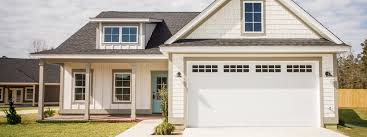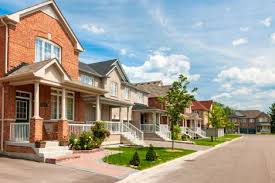For the past 18 years, the Seattle Department of Transportation has relied on a supplemental property tax levy to provide funding for improvements to Seattle’s transportation system, starting with the “Bridging The Gap” 9-year levy (2007-2015), followed by the 9-year “Levy to Move Seattle” (2016-2024). In April, Mayor Harrell released the draft “Transportation Levy” as an 8-year (2025-2032), $1.35 billion package with a big focus on street maintenance and bridge monitoring/repair.
On Friday (May 3), Mayor Harrell updated the proposed 2024 Transportation Levy to $1.45 billion (Office of the Mayor), adding $100 million to the original proposal spread across several categories, with most of the additional funding allocated to transit corridor construction, pedestrian/bicycle safety, neighborhood street improvements, and people streets.
The Seattle Times ($) notes that the levy, if passed, would be the single largest levy in Seattle history. The Urbanist and PubliCola note that while the increased proposal is a small step closer to the desires of a coalition of advocates for transit and safe streets, there is still a push for an even larger levy complete more transportation projects faster. For reference, Ethan Campbell of Seattle Neighborhood Greenways assembled a table comparing the 2024 Transportation Levy to the Move Seattle levy it hopes to replace (Google Sheets).
Looking at the Transit Corridors and Connections ($145M), here’s the map of “initial projects” proposed in the Levy:
Within the Transit Corridor Projects, the Levy proposes to do the following:
The proposed Levy identifies the following “Initial Transit Performance Projects”:
Some of these projects are described in the recently-adopted Seattle Transportation Plan (STP), in Appendix A – STP Large Capital Project Summary Sheets. For projects that aren’t described in the STP, it seems we must simply wait for more details.
The Seattle City Council’s select committee for the levy will have its first real look at the Transportation Levy proposal on Tuesday, May 7, at 10:30am. Seattle Neighborhood Greenways is leading a coalition of advocacy groups (including the Seattle Transit Blog) with a call for action to provide public comment to the City Council in calling for a Levy totaling at least $1.7 billion, with at least 50% of levy funding for improvements for people walking, rolling, biking, and riding transit. The demands include ideas on where the money could be allocated based on the cost analyses provided in the EIS completed for the Seattle Transportation Plan.
In January, polling firm EMC Research informed the City that among likely voters, 56% would support a levy totaling $1.7 billion over eight years (pdf). Based on similar polling indicating a healthy margin of support for a Housing Levy that ended up winning by a landslide, it seems that a Transportation Levy of $1.7 billion would be readily supported by voters.
Join Seattle Transit Blog in taking action to support a better Transportation Levy (actionnetwork.org).
Honestly, I am bothered by these “feel good” categories with pots of money that blur what they’re wanting to accomplish. Many overlap.
Take crosswalk signals for example. What category are they? There are as many as 8 of the 10 categories that could fit!
And what’s the difference between Vision Zero Safety, Pedestrian Safety and People Streets?
I liked the Murray-Kubly measure was more straightforward with targets on miles of sidewalks or numbers of crosswalks. Pedestrian improvements benefit many types of trips including access to transit. Granted, the bad cost estimating made the Murray-Kubly program woefully deficient on the promised targets — but at least the public had a tangible understanding of what the program was building.
I get the impression that SDOT has learned some unfortunate lessons from Bridging the Gap and Move Seattle – both levies were hit by major economic headwinds after coming off of hot growth periods. I think it’s understandable to be hesitant to post firm numbers for deliverables.
At this point, the public understands that SDOT needs more money than provided by the General Fund to do anything more than basic Find-It-Fix-It pothole repairs and the like. The polarization today is such that voters either believe that SDOT is deserving of such funding in pursuit of its goals, or that SDOT is not deserving of any additional funding. If the polling is any indication, there are more folks who believe SDOT will use the money for worthwhile projects than those who don’t, so practically any levy will pass. The real question is how fast we want Seattle’s street to evolve to a less car-oriented nature, and how much money we want to give SDOT to make that happen.
I agree. The Kubly plan had specific projects … that they knew weren’t going to be funded adequately by the time the proposal went to the voters. This meant that many deliverables simply weren’t delivered. I really don’t see the point of taking that approach again.
Likewise I’m not a fan of twenty year “master plans”. Things change. An agency has to be flexible when it comes to these projects. That’s why I’m not really upset about the lack of money for transit. It is easy to argue for more transit money, but I’m well aware that the money is fungible and I think it should be fungible. For example consider the change to the 62 I mentioned a while back. This is definitely a transit project and SDOT has to do the work (Metro can’t). But it could easily fall under the “Street Maintenance & Modernization” bucket which is a big one.
The biggest problem — by far — is that there simply isn’t enough money. I’ve been very happy with what SDOT has done lately (and I have a feeling I’m not alone) but they simply need more money.
Long term plans are essential … they just need to be 1) updated regularly, and 2) reconciled with each other. Some of the most important work SDOT has done recently is to reconcile all the existing plans and highlight to the politicians where streets don’t have the ROW to provide bike, bus, and/or freight infrastructure.
It is good to have a list of things you want to get to (e. g. the work on the east side of Green Lake that would make it possible to move the 62). It is important to know about problems that have to be dealt with (like decaying bridges). But the idea that we know what the bike or transit network will look like in 20 years is ridiculous. Things change. There was a very real possibility that 130th station was not going to be built. As a result, this was seen as an important bike corridor, but like today, no buses would run there. Now it is the opposite. What is true of that corridor is true of many others. It is quite possible that the work they did for the Metro 8 would have been adequate. It wasn’t. Thus it is now very important that we add BAT or bus lanes there. 85th was an important corridor in the past, pretty soon it will be more important than ever (with two buses running there). It is more important to be nimble than to have a detailed long-term plan that will never become reality.
The one area where you really want a long range plan is with a subway system. It is extremely expensive to alter a metro. It is important to future-proof your system. For example, anyone with any vision of the future would have realized that a UW-to-Ballard makes sense to build (long before we even consider going to West Seattle). Thus it was important that Sound Transit put in a branch there, so that the expansion would be easy to add in the future. But that doesn’t mean we will know exactly where the stations will be. It just means we have a rough idea, and are willing to spend a relatively tiny amount of money on something it is highly likely we will eventually want to build.
Long-range plans guard against unknowingly building a patchwork of projects that don’t lead to a coherent whole or contradict other future projects. The SLU and First Hill Streetcars were built as one-offs in an era when there weren’t long-range plans, and now we’re stuck with two white elephants. Long-range local bus-network planning ended in one of the recessions, probably 2000 if not earlier, and it wasn’t picked up again until Seattle’s transit master plan in 2012 and Metro Connects in 2016.
> It is good to have a list of things you want to get to (e. g. the work on the east side of Green Lake that would make it possible to move the 62). It is important to know about problems that have to be dealt with (like decaying bridges). But the idea that we know what the bike or transit network will look like in 20 years is ridiculous.
I mean the fremont ave bike lane is in the long range bike plan and the overall king county trail plan. Isn’t that one you wanted to move to the other road (phinney?)
And in general most of the bike lane and transit lane improvements while not 1-1 are almost all in the original 2013 bike plan and 2015 transit plan.
https://www.seattle.gov/documents/Departments/SDOT/About/DocumentLibrary/BicycleMasterPlan/Seattle%20BMP%20Master%20Map.pdf
https://www.seattle.gov/documents/Departments/SDOT/TransitProgram/TMP2016CH3.pdf
Also say the 255 reroute to UW rather than downtown was all the way planned back in the 2014 plans for the sr 520 rebuilds. stride brt is semi-planned from the 20+ year old i-405 corridor planning.
The city should be updating LRPs every 6~10 years and then putting forward new levies every 8~10 years. LRP, master plans, and levies should have a 20-30 year time horizons, but they aren’t “set and forget.” A given levy should try to execute on a few keystone projects and then a large volume of small projects (e.g. adding sidewalks) to deliver on the key outcomes of the city’s plans, but with the understanding there will be new plans and new funding.
The city shouldn’t be waiting until one levy expires to add the next one, but instead stacking them up (like how ST is stacking ST1/2/3 tax flows), with each new vote re-setting the city’s priorities (as there is always a need to pivot away from some earlier priorities)
I mean the fremont ave bike lane is in the long range bike plan and the overall king county trail plan. Isn’t that one you wanted to move to the other road (phinney?)
I most certainly do not. I want to add bike lanes on the Fremont corridor (for much of the way it is just a Greenway). I think that is a better alternative than running bike lanes on Aurora (I think we should have center-running buses on Aurora). Where possible I think we should have bike lanes paralleling the main arterial and bus/BAT lanes where the buses run (Phinney/Greenwood as well as Aurora).
And in general most of the bike lane and transit lane improvements while not 1-1 are almost all in the original 2013 bike plan and 2015 transit plan.
So what? That doesn’t mean they are good or bad. Things change. A lot of the long range plans are based on obvious modifications. For example, truncating buses in response to Link expansion or building a bike lane around Green Lake (yeah, no sh**, Sherlock). But a lot of ideas quickly become out of date, or were never a good idea. Yet folks somehow think that because it is “in the plan” that somehow makes it sacred. Somehow the greatest minds in the city figured this out way back when and who are we to question those ideas. That is just silly given how the city changes, and how it effects people that didn’t even have a say with the original plans (because they moved to the area). By all means it is important to have goals (e. g. 20% modal share by bike) as well as a complete network (that can be defined fairly easily) but when you start listing streets you are making assumptions that are quite often incorrect.
@AJ — The basic problem is that the city can’t adequately tax itself. That is why levies like these are needed. In an ideal world the city would just increase the taxes via the city council and mayor. That means SDOT funding would go up and down (depending on the mayor and council) at a regular basis. There would be no need to micromanage the projects (and have them specified by the city council or a plan). They would just give them the money and let them do what they do.
For big projects (like the West Seattle Bridge) they council should definitely get involved. But those are few and far between, and aren’t even covered in this levy (or any plan). There is no plan for dealing with the Magnolia Bridge. There are a bunch of ideas, but no officially agreed upon plan. There won’t be until they get close to funding whatever it is they agree to build.
“Modernization” smells fishy. The biggest pot also leaves the door open to adding lanes.
Yeah, like … like … um, I can’t think of when SDOT added lanes. I can think of plenty of times when they took them away, but I can’t think of them adding general purpose lanes. Nor can I think of any time they wanted to. I’m sure way back when they did that sort of thing, but not for the last ten years, and certainly not with the current administration which is doing the opposite in ways I never imagined I would see.
Now WSDOT is a different matter. They are comfortable adding lanes and even adding new freeways. Same with various suburbs and I’m sure various cities in the state. But Seattle is just not doing that — quite the opposite.
https://www.portseattle.org/projects/spokane-street-viaduct-widening … partially funded by Port of Seattle, but is an SDOT project.
SDOT did have to acquire some ROW to accommodate Madison BRT, but not sure if a full lane was added anywhere or if the ROW was just to accommodate wider lanes and the center platforms.
In the detailed levy document they do actually outline some of the goals, but some are absent. Some main ones (not everything is one to one comparable):
new sidewalks: previous goal 150, implemented 204, new levy goal: 250
sidewalk spot repair: 68,000 implemented, new levy goal 34,000
“Street Maintenance & Modernization” is the most complicated one. Comparing to the previous levy it’s a combination of the “transit programs” and “maintenance” category.
pave-lane miles: goal 180; implemented 137; new levy goal 50?
it’s on page 16 but basically out of the 13 corridors listed around 8 have the “street reconstruction” aka I assume similar to how 23rd avenue was rebuilt.
Current levy:
https://www.seattle.gov/documents/Departments/SDOT/About/Funding/Levy/SDOT_Levy_Proposal_May2024.pdf
Previous levy to move:
https://www.seattle.gov/transportation/about-us/funding/levy-to-move-seattle
Given how many projects are ultimately multi-modal in nature, should the higher level pots be simplified into fewer multi-modal ones? Routine operations and maintenance ; minor enhancement projects, critical major facility upgrades (bridges) and major corridor initiatives?
I find sorting everything into mode-based categories as old-fashioned thinking. Most projects affect other modes directly or indirectly.
Streets are so extensive, and so critical to cars, transit and freight as well as emergency vehicles, and so expensive to maintain let alone replace, streets will always consume the lion’s share of any city’s transportation improvement program. This becomes more acute when a city like Seattle is facing huge budget deficits in the general fund and the council wants to balance the budget with cuts rather than revenue increases, which often means raiding levies for general operations.
It shouldn’t be surprising Harrell just increased the amount of the levy so more levy money will be “available” for general transportation projects that disproportionally involve street repair and replacement because streets are constantly being degraded by use.
What is really irresponsible is the tiny amount of the levy dedicated for bridge repair and replacement, a $3.5 billion unfunded liability according to the state auditor past councils ignored despite record tax revenue. 100% of the levy should go toward streets and bridges although those are not sexy things to sell a levy like a street car along first.
The issue with the bridges is that we have no consensus on what we should do with them. Keeping all the bridges would be extremely expensive and in my opinion unnecessary. Magnolia is the best example. The Magnolia Bridge is way to expensive to replace for what it gives you. There are a number of different alternatives.
Then you have the timing. For example, with the West Seattle Bridge they did the right thing. They spent about 80 million and bought us about 40 years. The same may very well be true of various old bridges.
The spent 74 million widening Mercer and turning it into 2 ways. To little effect.
But I get your larger point. I’m just naturally suspicious of transportation agencies, and this Council and Mayor are particularly concerning.
Anyway, good point. Forgot about the Mercer project. So stupid. Seems like ancient history but it wasn’t that long ago. Must have been a Nickels project, just like the SR-99 tunnel.
Speaking of which, that is a state project (not SDOT). Nickels was in favor of it though (it wouldn’t have happened without support from local officials). His support of that (and not the monorail) played a part in his losing his job. To be fair, the tunnel has fewer lanes than the old viaduct. Alaskan Way (the road underneath and next to the viaduct) was always pretty wide (https://maps.app.goo.gl/zdJ214hnr5vj4WVKA). I think the hope was that this would be a much more narrow street (since one of the goals was to open up the waterfront) and that is why people are disappointed. Part of the reason it is so wide is the car ferry. Another was the lack of ramps at Western for the new tunnel (WSDOT felt that they needed a lot of surface throughput). At least they added bus lanes.
In any event, I just don’t see them building anything like Mercer in the future (especially since it didn’t work). They are taking lanes (for bikes and buses) not adding them. If SDOT spends too much money on car project it will be unnecessary bridges (like Magnolia) not a big widening project.
Oh, and while the mayor has been disappointing on several issues (including the size of this proposal) I’ve been very happy with SDOT. I’ve talked to him personally and trust that he wants to do the right thing (and basically move us to be more like Amsterdam). If he is faking it he deserves an Oscar.
So glad that this is a Seattle levy and not a country one. It will pass. It probably would pass based on the Seattle vote alone. I have too many loved ones looking for places to move outside of King County. Property taxes on their homes becoming unaffordable is one big reason. Another is the cost of living is going up and the quality is going down.
I thought Nathan’s summary was excellent and appreciate all the time it must have taken to prepare.
The well known saying about a levy is if you ask for $1 too much you get zero. To Mathew’s point, around 14% to 17% of rent is for property taxes according to Crosscut. There is no free lunch with our regressive tax structure.
Today the council will hold its first public meeting on Harrell’s proposed and increased levy. The council is currently consumed with how to close a $240 million deficit in 2025 in the general fund, and so far appears to be leaning toward cuts, something the council hasn’t had to do in a long time.
I will be surprised if the council agrees to increase the levy even higher, especially after the $940 million housing levy. I could see the council going back to Harrell’s original amount unless the extra $100 million is really a backhanded way to fund SDOT’s general obligations when there could be budget cuts across the board.
I also don’t see the council under Sara Nelson dedicating 50% of any levy to walking, biking, rolling or transit, although she would likely prioritize transit over the others. Nelson listens to The Chamber and DSA.
At this first council meeting I think the things to look for are: 1. What amount the council thinks is right for the levy; and 2. Whether the council wants to leave the levy categories pretty vague which gives SDOT more discretion or wants to control how the levy money is spent more closely, which probably is not good for biking, rolling, and walking but may be good for transit which is much more important than biking and rolling, especially for lower income Seattleites.
The well known saying about a levy is if you ask for $1 too much you get zero.
Sure, but that is highly unlikely based on the polling (see Nathan’s comment) and recent history (ST3 results in Seattle, Metro funding, previous similar SDOT packages).
The Northwest Progressive Institute (NPI) released polling results this morning showing that a majority of Seattle voters, when given the option between levies totalling $1.7B and $1.9B, would prefer the larger levy.
https://www.nwprogressive.org/weblog/2024/05/seattle-voters-want-a-bolder-2024-transportation-levy-with-close-to-2-billion-in-investments-npi-poll-finds.html
NPI is well known for high-quality polling, and these results indicate a strong appetite among Seattle voters for transformative change and a willingness to pay for it.
That is an interesting poll but I am not sure the council will go there. If a levy doesn’t pass you get zero. Will this council really increase Harrell’s increase. Maybe, but they may also change the priorities.
I was interested in the priorities of those polled: bridges (yeah), paving streets, improving unsafe streets (without specifics). Sidewalks, safe routes to schools, safety around light rail stations, invest in equity zones, street dining, limit cars in Pike Place Market, improve mixed use pedestrian/bike trails, mitigate displacement from new light rail stations, and then BAT lanes third from the bottom.
If pigs can fly we are in deep trouble. It is highly unlikely either will happen.
It depends on the amount. Renewal of the transportation levy should pass although it adds around $500/year in property taxes to the average house.
At some amount a levy will not pass. Harrell has gone to $1.45 billion, and I am sure if he thought the voters would go to $2.45 billion he would, although I am not sure Sara Nelson would. The Cascadia Advocate thinks $1.9 billion would pass but that is rolling the dice when if they are wrong you get craps. A poll of 650 is not many to make such a large bet when the downside is zero.
My prediction for what it is worth is the council does not go above $1.45 billion, and there is a 50% chance the council goes back to Harrell’s original levy amount. The folks not keen on large property tax increases are commercial and multi-family property owners and they are the favored group among this council, and commercial property owners are already struggling.
I thought some of the priorities in the poll were responsible (bridges), some obvious (repave streets), some eye candy, and some too low (transit and bus lanes). But what really counts I think is if the council leaves the project selection up to SDOT or wants to play a more active roll that would likely be closer to the poll results.
If the council does anything, they’ll increase the levy something close to whatever amount they decide to gut SDOT’s funding from the General Fund. They have something like a quarter million dollars to shave off the city’s expenditures, and their “audit” of the budget proved that the only new spending has be directly supported by new revenue, or has been mandatory from increases in wages in order to keep city employees from leaving their jobs.
“The folks not keen on large property tax increases are commercial and multi-family property owners and they are the favored group among this council”
Taxes have to be weighed against the benefits the projects provide, and against the negative consequences of not doing it. It’s not like the tax is doing nothing.
I agree Nathan. I think Harrell raised the levy $100 million to cover cuts to SDOT over the next 7 years. Only one slight correction: the council has a quarter billion, not million, dollars to shave off. Otherwise your article was excellent.
I think Harrell set the levy low so he could look like he’s compromising between fiscal conservatives (who don’t have anywhere near a majority of the voter base) and the progressive advocates who are calling for a $3B levy.
The Council has a special budget group that’s apparently attempting to figure how to squeeze blood from a stone, and my cynical take is that they’re going to cut everything except the “untouchable” departments like SPD and use things like the Transportation Levy to backfill and keep things afloat.
Should Seattle be creating a pot of money to make Link stations better?
ST is now creating a “betterments policy” that at its core expects local jurisdictions to pay for these betterments.
There are lots of improvements that could be made to existing Link stations. Things like escalators and elevators come to mind. Safety treatments at surface stations, new station entrances and lighting are other things.
Keep in mind that not only are there 16 current Link Stations with two more being opened in 2-3 years (Judkins Park and 130th), but there will likely 3 more in West Seattle and 1 at Graham St that should be well into construction by the sunset of the measure. Even DSTT2 and Ballard Link may be designed and ready to build by the sunset.
At the very least, I think the distribution of the last few years may need to be more flexible.
Maybe but definitely not out of the levy money. Upgrading a link station will cost a lot of money. Adding an additional station entrance can cost like 100~200 million.
I’m fine with connections like new sidewalks/bike paths etc… to the stations but using the money for the station itself I can see it easily backfiring.
Seattle Transit Blog is an independent, award-winning publication covering transit and land use issues in Seattle and the Puget Sound area since 2007. About Us










